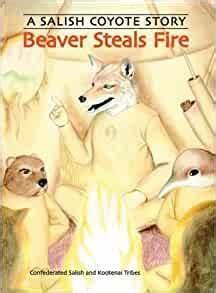Note to the reader…we must ask one special favor of those who use this book in the classroom or who may otherwise read or discuss it aloud: our traditional Coyote stories–the legends of Coyote–and the other animal people that appear throughout this book–should be told or discussed only during winter when snow is on the ground. The elders usually bring out the stories in November and put them away again when the snow is gone–usually by late February or March. Some say the stories are put away when the snakes come out. It is said that snakes will come out to those who do not follow this custom or that cold weather will come during the warm months. Coyote stories, like other parts of our traditional way of life, are part of a seasonal cycle. By following this tradition readers, teachers, and students can enjoy this aspect of our culture–keeping and saving something for the time of year during which it belongs. –Salish and Pend d’Oreille Culture committee
Comprehension Questions
1. When should Coyote stories be told?
A. Anytime
B. Summertime
C. During the winter
A. Because there is much work to do during the other seasons.
B. Because that's Coyote's favorite time of the year.
C. Because that is when the elders tell animal tales, and they have asked the people to honor this tradition.
Your Thoughts
Vocabulary
4. List any vocabulary words below.

